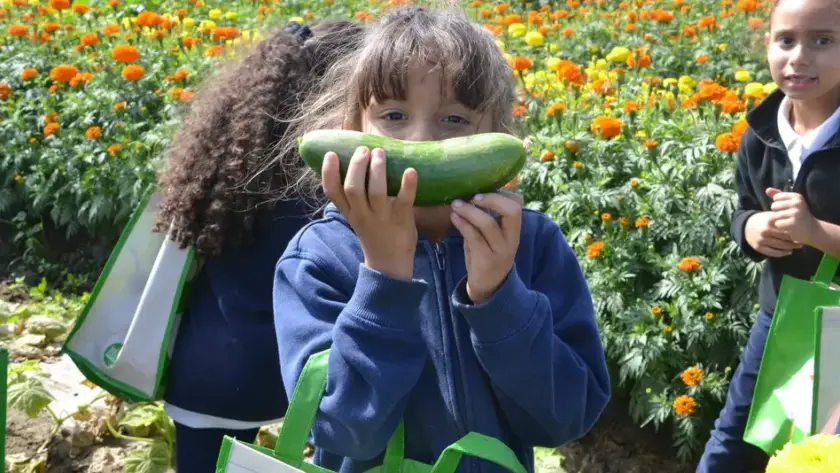A shocking new report from the Centers for Disease Control and Prevention (CDC) has revealed widespread glyphosate contamination in the US population. The CDC tested urine samples from a broad cross-section of adults and children and found extremely high rates of glyphosate present. 81% of adults and a staggering 87% of children had detectable levels of this toxic herbicide in their bodies.
These troubling findings provide hard evidence that exposure to glyphosate is pervasive. Glyphosate is the most heavily used agricultural chemical in America, with over 250 million pounds sprayed each year. The chemical is best known as the active ingredient in Monsanto’s weedkiller Roundup. While regulators assert glyphosate is safe for humans, numerous independent studies have associated exposure with cancer, kidney disease, shortened pregnancies and other health risks.
The CDC results undoubtedly raise alarms about the extent to which glyphosate has penetrated our food supply, air, and waterways. Even children as young as 6 showed high rates of exposure. While regulators debate proper safety limits, minimizing exposure remains crucial.
There are steps individuals can take to assist the body’s natural detoxification process and expedite the removal of glyphosate and other harmful chemicals. This article will explore five natural methods shown to enhance detoxification. Proactively supporting detoxification through lifestyle is emerging as an important component of maintaining wellness in our contaminated modern world.
What is Glyphosate?
Glyphosate is the primary active ingredient found in Roundup herbicides, as well 700 other products ranging from household products to non-Roundup herbicides. Glyphosate was originally developed as an industrial cleansing agent to chelate heavy metals and other substances from clogged pipes. When the discovery was made that glyphosate actually kills microbes, it was transformed into what became one of the most widely used weed killers in conventional agriculture.
Nearly 200 million pounds of glyphosate are dumped on American soil each year. This includes Roundup that has been sprayed for agricultural purposes, as well as home use for gardens and yards.
While hundreds of tests and independent, reliable studies have shown that glyphosate is a major threat to human health, the FDA and EPA only rely on tests done by the manufacturer. This means results are largely biased, and as a result, no regulations are put in place to protect humans, animals, or the environment.
Glyphosate is not only used as a means to prevent weeds from popping up, but it is used as a drying agent that is sprayed heavily on crops like wheat and sugarcane.
Glyphosate is a broad-spectrum systemic herbicide and crop desiccant manufactured by the Monsanto Company. The chemical compound works by inhibiting the EPSP synthase pathway which is necessary for plants to synthesize amino acids.
By disrupting this fundamental biological process, glyphosate kills unwanted plants. Glyphosate was first synthesized in 1950 by Swiss chemist Henry Martin, though it was not widely used as an herbicide until Monsanto began marketing it under the Roundup brand in 1974.
The use of glyphosate dramatically increased in the 1990s, after Monsanto introduced genetically engineered “Roundup Ready” crops that are resistant to glyphosate. This allowed farmers to liberally spray the herbicide directly on crops to kill weeds without harming the crop itself. As a result, glyphosate became the most heavily used agricultural chemical in the United States.
Environmental Impacts of Widespread Glyphosate Use
Researchers found Glyphosate-based herbicides (GBHs) are the most heavily applied herbicide in the world, and their use continues to rise. GBHs contaminate drinking water sources, precipitation, and air, particularly in agricultural regions worldwide.
The dramatic rise in use of glyphosate over a short period of time means that this chemical is now pervasive in the environment. Glyphosate residues are commonly found in groundwater, soils, and surface waters near agricultural sites due to runoff.
Even low concentrations of glyphosate residues can harm non-target plants and aquatic microorganisms that are essential to ecosystem balance. The overuse of glyphosate has also caused the evolution of so-called “superweeds” that have developed resistance to the herbicide, requiring increased application of glyphosate or more toxic herbicides.
This further degrades soil quality and harms local ecosystems. There is evidence that glyphosate may persist in soil and aquatic environments for months, meaning the damage from accumulation of residues may be long-lasting even if use were to stop today.
Health Risks Linked to Glyphosate
Multiple scientific studies, including research conducted by the World Health Organization’s International Agency for Research on Cancer, have associated exposure to glyphosate with increased risk of certain cancers such as non-Hodgkin’s lymphoma. The IARC classified glyphosate as “probably carcinogenic to humans” in 2015.
There is also evidence from animal studies that glyphosate may act as an endocrine disruptor, causing reproductive damage and birth defects. Epidemiological studies have linked glyphosate to shortened pregnancies.
The chemical has also been associated with liver disease and kidney failure in farmworkers. However, Monsanto refutes the findings of these independent studies, pointing to EPA assessments deeming glyphosate safe. More unbiased research is required to understand the long-term effects of glyphosate on human health.
Why Glyphosate Use Persists Despite Concerns
Monsanto and the agricultural industry have a lot of economic interests tied to glyphosate and hold sway over regulatory agencies like the EPA. Industry leaders resist changes to the profitable status quo and insist glyphosate is safe if properly used.
While organic farming provides a glyphosate-free alternative, eliminating glyphosate-based herbicides could significantly drive up food production costs, a financial burden that would pass to consumers. Thus we are faced with a complex tension between the benefits and risks of this prevalent chemical.
More impartial research and thoughtful policy changes are needed to ensure the public good is prioritized over corporate interests.
5 Ways To Safely Detox From Glyphosate
Glyphosate has many adverse side effects, and may be a contributor to chronic conditions like autism-spectrum disorders and cancer. This is why it is so essential to do a glyphosate detox. Not only will the following recommendations help chelate glyphosate from deep down in your tissues, but they will assist in the removal of other harmful pesticides, herbicides and toxins from the body.
Glyphosate Detox: Crops To Avoid
One of the first things you should consider when doing a glyphosate detox is to quit eating the very foods this chemical is sprayed on. GBHs are used on crops like maize, soy grain, canola, wheat, barley, and edible beans. That’s not all, though. Glyphosate is also sprayed as a desiccant on things like almonds, grapes, and rice.
According to the Environmental Protection Agency (EPA), the following non-organic crops are sprayed with glyphosate:
1. Alfalfa*
2. Almonds**
3. Apples*
4. Apricots
5. Artichokes
6. Asparagus
7. Avocados
8. Barley*
9. Beans, Green
10. Blueberries
11. Broccoli
12. Brussels Sprouts
13. Cabbage
14. Caneberries
15. Canola*
16. Canteloupes
17. Carrots
18. Cauliflower
19. Celery
20. Cherries*
21. Chicory
22. Corn**
23. Cotton**
24. Cucumbers
25. Dates
26. Dry Beans/Peas*
27. Fallow**
28. Figs
29. Garlic
30. Grapefruit*
31. Grapes**
32. Hazelnuts
33. Kiwifruit
34. Lemons*
35. Lettuce
36. Nectarines
37. Oats*
38. Olives
39. Onions
40. Oranges**
41. Pasture*
42. Peaches*
43. Peanuts*
44. Pears*
45. Peas, Green
46. Pecans*
47. Peppers
48. Pistachios*
49. Plums/Prunes*
50. Pluots
51. Pomegranates*
52. Potatoes
53. Pumpkins
54. Rice*
55. Sorghum**
56. Soybeans**
57. Spinach
58. Squash
59. Strawberries
60. Sugar Beets**
61. Sugarcane*
62. Sunflowers**
63. Sweet Corn*
64. Tangelos
65. Tangerines
66. Tobacco
67. Tomatoes*
68. Walnuts*
69. Watermelons
70. Wheat**
*Over 100,000 pounds of glyphosate herbicide sprayed on them throughout the year
**Over 1,000,000 pounds of glyphosate herbicide sprayed on them throughout the year
Applying glyphosate to non-GMO crops as a desiccant before harvest is probably one of the worst times to spray, because the glyphosate then absorbs into the food crop directly. In other words, glyphosate can’t simply be “washed off,” as it has become part of the food itself. This chemical is then ingested by those who consume the whole, unprocessed food, or via processed foods that contain glyphosate as an ingredient.
It is shocking the number of crops that are sprayed with glyphosate. I was always under the impression that the major crops to stay away from (and to buy organic) were those like wheat, soy, canola, and the basic ones you hear mentioned by many health food websites. Unfortunately, that is not the case.
Glyphosate doesn’t only taint our food supply, but it can enter ground water and taint organic crops. Not to mention spray fall-out which can travel miles upon miles on windy days. If we’re not directly eating glyphosate-sprayed crops, then we’re inhaling it, or drinking it (or even bathing in it). There is quite literally no way to escape the glyphosate chemical giant Monsanto (now owned by Bayer) has created.
Glyphosate Detox: How To Rid Your Body of Harmful Herbicide and Pesticide Residues
Scientists and clinicians have identified some ways in which harmful herbicide and pesticide residues can be removed or lessened in the body. One of the best ways is to consume a “detox diet.”
Dr. Robert Zieve, an integrative medicine expert and medical director of Partners in Integrative Cancer Therapies, of Prescott, AZ recommends these remedies:
Adaptogenic Herbs such as Siberian ginseng, ashwagandha, Rhodiola to help guard against the herbicide-induced endocrine disruption
Other herbs like milk thistle and dandelion root help protect the liver.
A study published in the December 2014 issue of the Journal of Environmental & Analytical Toxicology found that by consuming the following substances, you can effectively reduce your urine levels of glyphosate:
- Fulvic and humic acids: I get my fulvic & humic acids (along with Shilajit which has both) from a company called Omica Organics. Click here to visit their website. Use the discount code: healthywildfree to get 10% off your order. This is in my opinion one of the best things you can do for cellular detox.
- Activated charcoal
- Bentonite clay
- Sauerkraut juice
Other studies have found that certain plant extracts help restore CYP enzyme (mentioned above) activity often disrupted by glyphosate, as well as protect liver cells from glyphosate intoxication.
These plant extracts include:
Other suggestions to help eliminate glyphosate from the body are as follows:
- Use infrared for sweating out toxins: Use the discount code: healthywildfree to get 5% off your order.
- Consume probiotic-rich foods, or take a high-quality probiotic. My favorite probiotic is called Qualia Synbiotic. Click Here to visit their website. Use the discount code: HealthyWildAndFree to get 10% off!
- Eat nutrient-dense whole foods, particularly raw, organic fruit and vegetables
- Eat organic foods as much as possible
- Avoid animal products like meat or dairy where GMO foods were used to feed the animals
- Avoid using herbicides and pesticides on your lawn
- Avoid consumption of GMO foods that are directly contaminated with glyphosate
Dr. Zieve philosophically points out that “detoxification is a lifelong process. The body already knows how to do this. We just need to get out of the way and support it in doing what it already knows how to do.”
If you believe you have high levels of glyphosate poisoning in your body, you can also order a Glyphosate Environmental Exposure Test from Health Research Institute. It also screens from AMPA, the metabolite of glyphosate, at no extra cost.
The CDC’s findings on the widespread presence of glyphosate in American adults and children cannot be ignored. This chemical is being ingested by the vast majority of the US population, both young and old. The implications for public health are deeply concerning given the scientific links between glyphosate and cancer, reproductive damage, and other ills.
It is clear that regulators like the EPA have severely underestimated the exposure levels the general public faces from this pervasive herbicide. Current “safe” exposure limits do not protect vulnerable groups like children, who face critical developmental windows of susceptibility. Tighter restrictions on glyphosate are warranted, including limits on usage before harvested crops and in public spaces.
In the meantime, Americans cannot wait for federal action. Taking personal steps to avoid glyphosate residues and enhance our body’s detoxification capacity is prudent. Eating organic foods, filtering water, avoiding weedkillers, and adopting regular sauna use can all help reduce our toxic burden. We must also pressure regulators and lawmakers to make decisions that protect human and environmental health over chemical industry interests. The health of future generations hangs in the balance.





